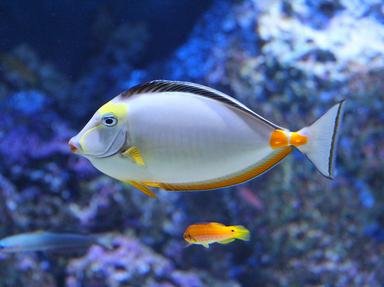Quiz Answer Key and Fun Facts
1. Are all anchovies members of the same species?
2. About how large is an adult European anchovy?
3. Female anchovies tend to be larger than males.
4. The blunt snout of an anchovy contains an unusual structure called a rostral organ. What lobe-finned fish, long thought to have been extinct, is also known for this organ?
5. What colour is an anchovy usually described as having?
6. How can you differentiate an anchovy from the other fish with a similar size and shape, such as a sprat?
7. Where are you most likely to find an anchovy in the wild?
8. Which of these is NOT a significant predator of anchovies?
9. Which of these is a major source of food for anchovies?
10. Which of these is NOT a way in which people enjoy eating anchovies?
Source: Author
looney_tunes
This quiz was reviewed by FunTrivia editor
rossian before going online.
Any errors found in FunTrivia content are routinely corrected through our feedback system.

